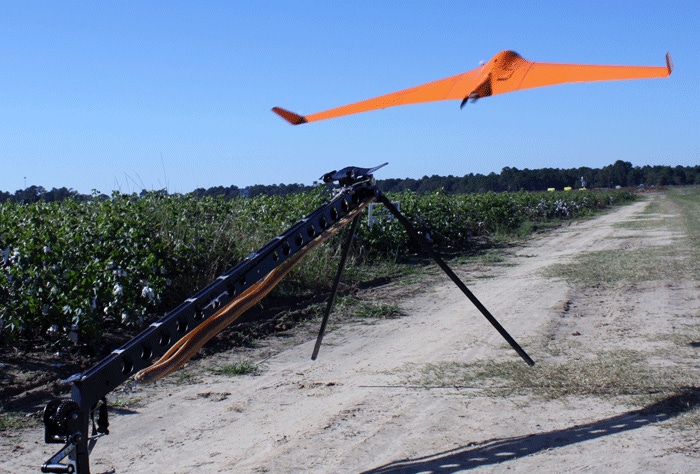December 28, 2014

How many of you witnessed an unmanned aerial vehicle (UAV) demonstration at a field day or a tour this past year? Probably most of you.
What was a novelty just a few short months ago became commonplace seemingly overnight – the sight of UAVs or drones (my apologies to those who don’t care for that word) taking flight over farmers’ fields and research plots.
Sure, they’re cool to watch, but the potential practical applications are limited only by a farmer’s imagination and creativity.
The nature of modern-day agriculture has, in many cases, forced producers to farm more land than they can sometimes manage with the limited help available, and the most immediate advantage of these flying machines appears to be that they allow fewer people to more easily cover larger acreages. And farmers, being the ingenious individuals they are, have already devised uses for UAVs that even the developers of the technology never dreamed of.
But the dizzying pace at which UAVs have come onto the scene has regulators scrambling to keep up, and that may spell delays in bringing the many benefits of the technology to the farm in a timely and economical manner. It’s becoming clearer as time goes on that the adoption of UAVs at the farm level won’t happen nearly as quickly as GPS guidance and other technologies that fall under the heading of “precision agriculture.”
According to a recent article in The Wall Street Journal, the Federal Aviation Administration is expected at any time now to propose rules for commercial drones that would mandate that operators have pilot licenses. Also, according to the article, it would limit drone flights to daytime hours, to below 400 feet, and within sight of the person at the controls.
Potential users of UAVs and the manufacturers of the machines say such a rule would greatly increase the costs associated with the technology and erode the inherent value of operating unmanned aircraft.
“Requiring that users only fly drones within their view would effectively prohibit many commercial applications, including pipeline inspections, large-scale crop monitoring and deliveries,” states the article. In addition, requiring one person to operate each drone would undoubtedly hurt the economics.
If the FAA’s rule goes forward as expected, it’ll be a “serious limiter,” according to Ryan Calo, a University of Washington law professor who studies robotics policy. “If they were going to have one pilot for each drone, they might as well put someone on a bicycle and send them over to your house.”
The FAA has stated it wants to take a gradual approach to “integrate unmanned aircraft into the busiest, most complex airspace system in the world” while protecting safety in the air and on the ground. The agency says it aims to propose rules that balance the promise of the technology with the risk. Increasingly, there are reports from airline pilots of mid-air drone sightings, and this is one of several reasons the FAA is treading lightly.
The agency currently allows recreational drone flights but effectively bans commercial use, including commercial agriculture. The planned rules, according to the FAA, are intended to gradually open U.S. skies to commercial unmanned aircraft, and the agency has promised to allow more UAV operations as technology improves.
But many in the industry say the planned rule will stifle the advancement of the technology. One UAV consultant has said that under the regulations as they are now written, it would take a day to survey a farm using drones compared with 30 minutes in a small airplane. Other rules, such as requiring a pilot’s license, might make the technology cost-prohibitive in much of agriculture.
Since other federal departments are reviewing the FAA’s draft rule, some details could change, and the release of the rule likely will be delayed. Taking into account the time required for public comments, it might be year or two before it’s completed.
Whenever the regulations are completed, and if they’re reasonable, I’m confident growers will have a backlog of ideas for making UAVs work on their farms.
About the Author(s)
You May Also Like






